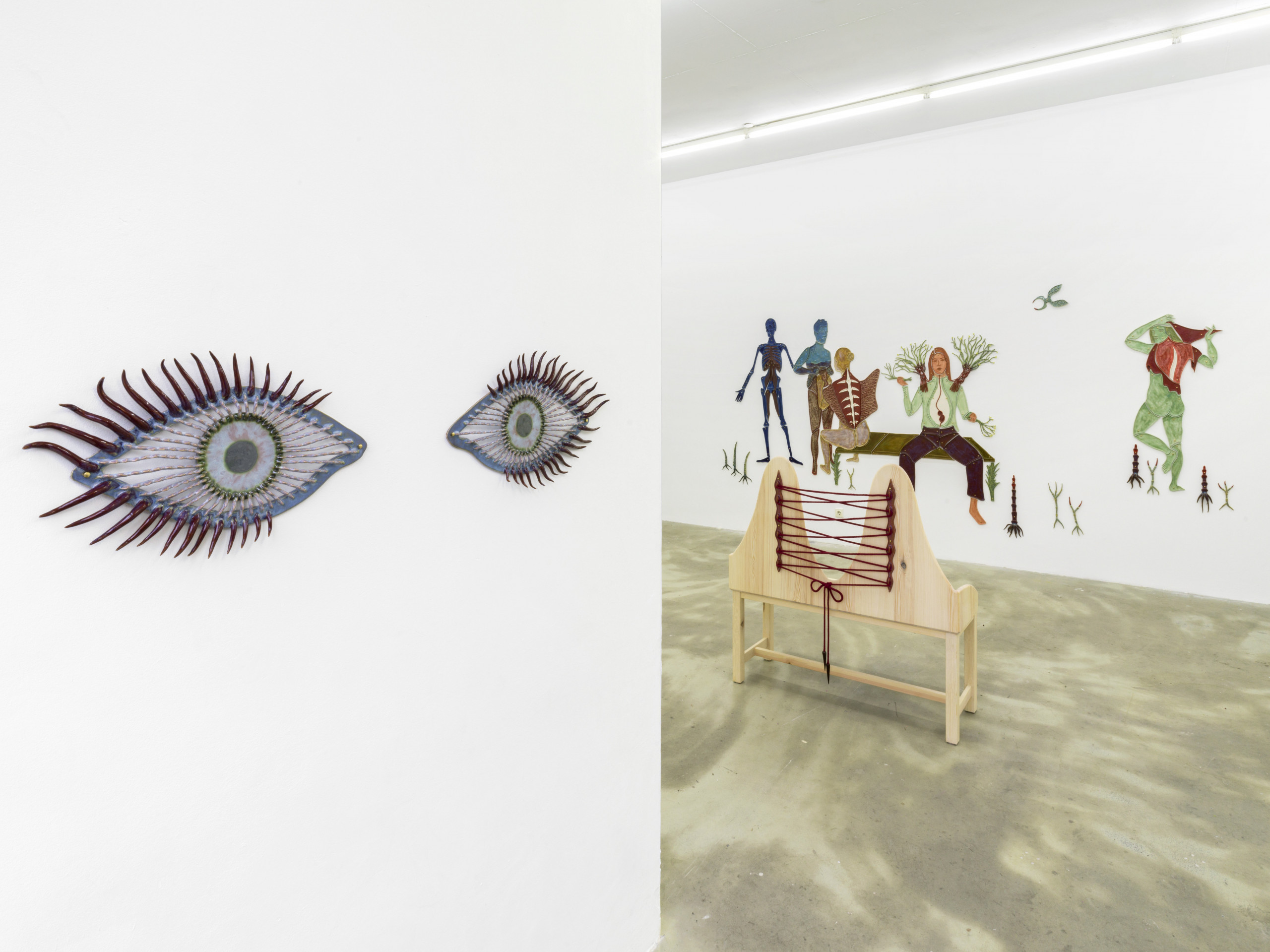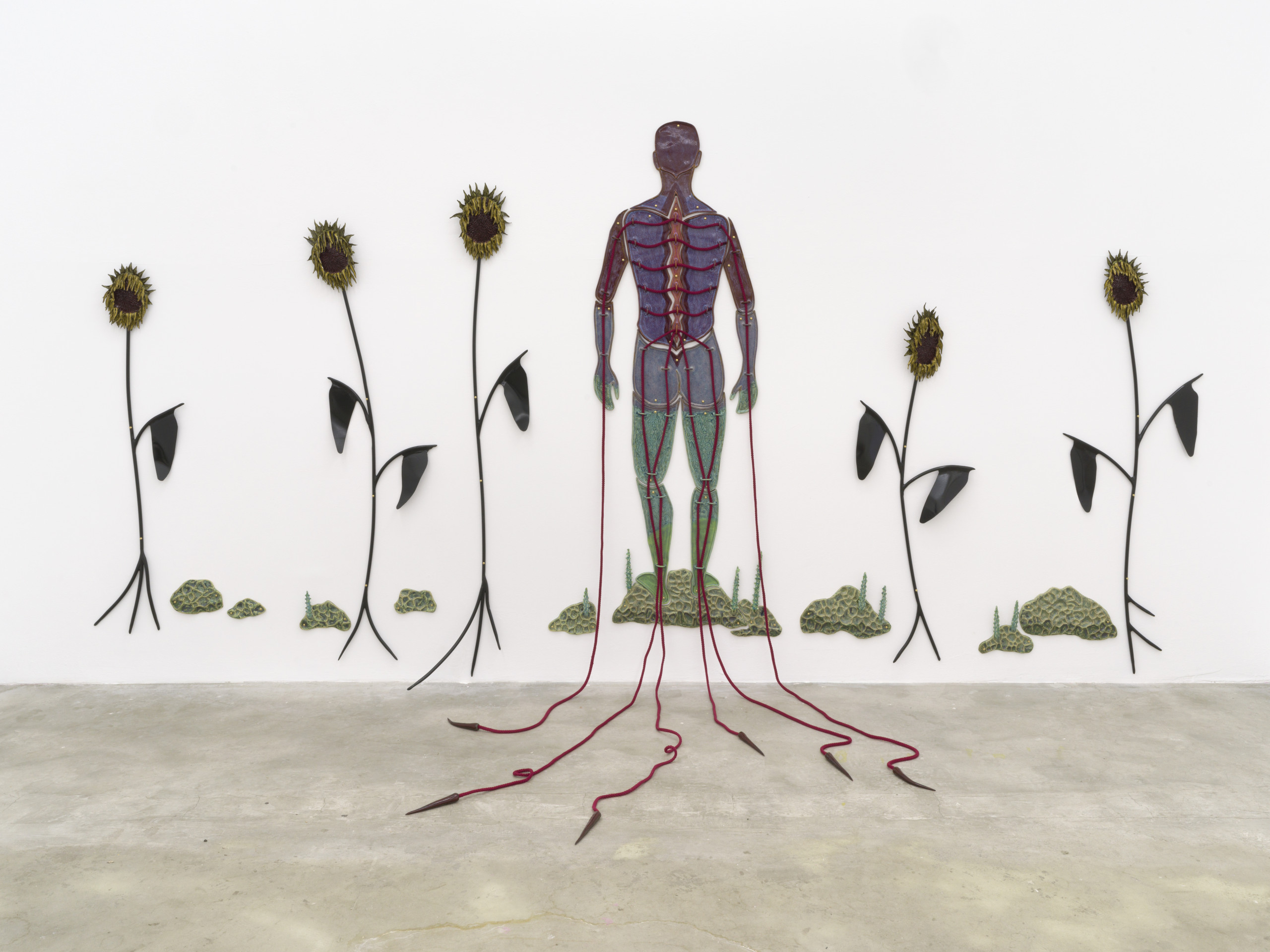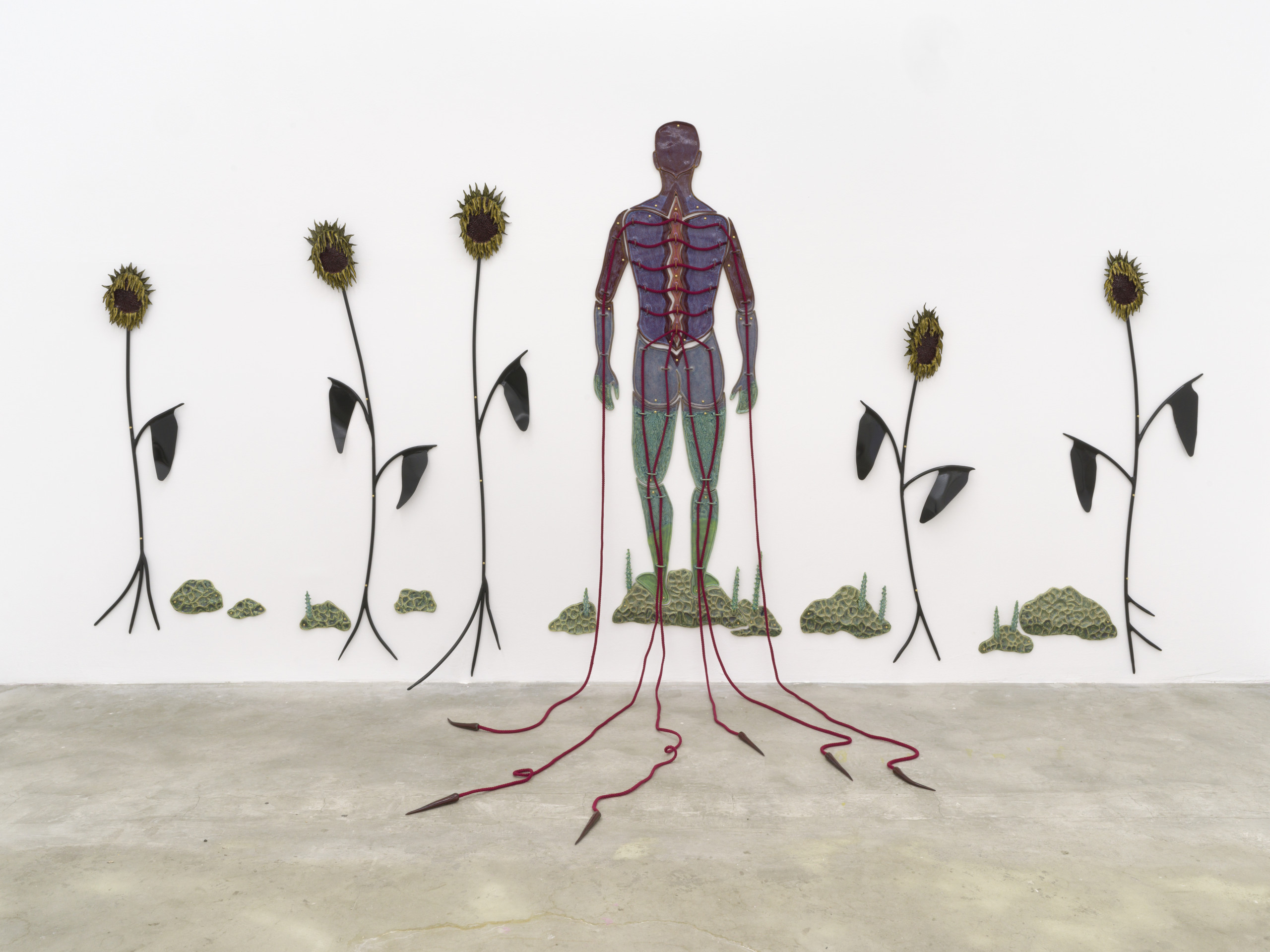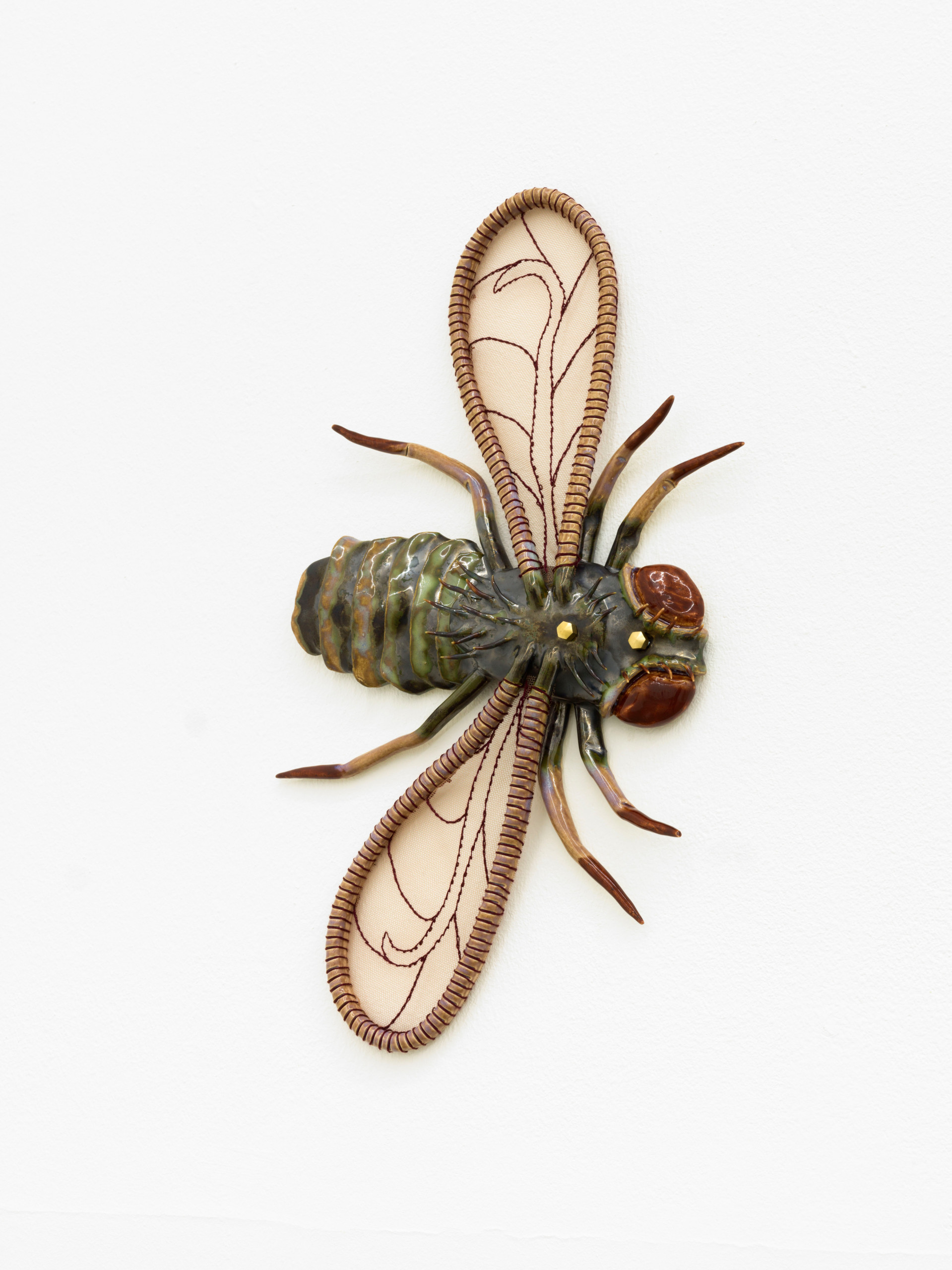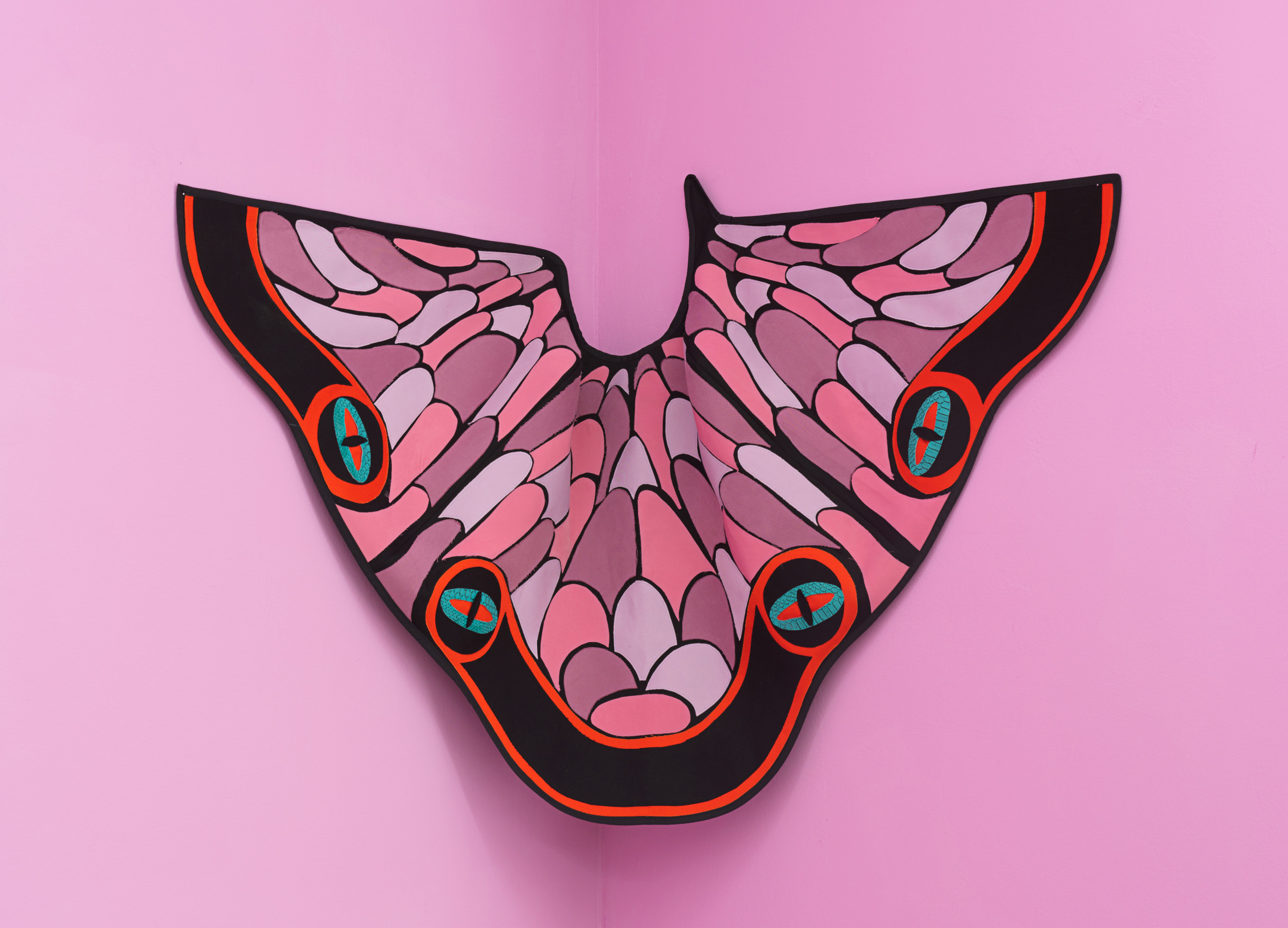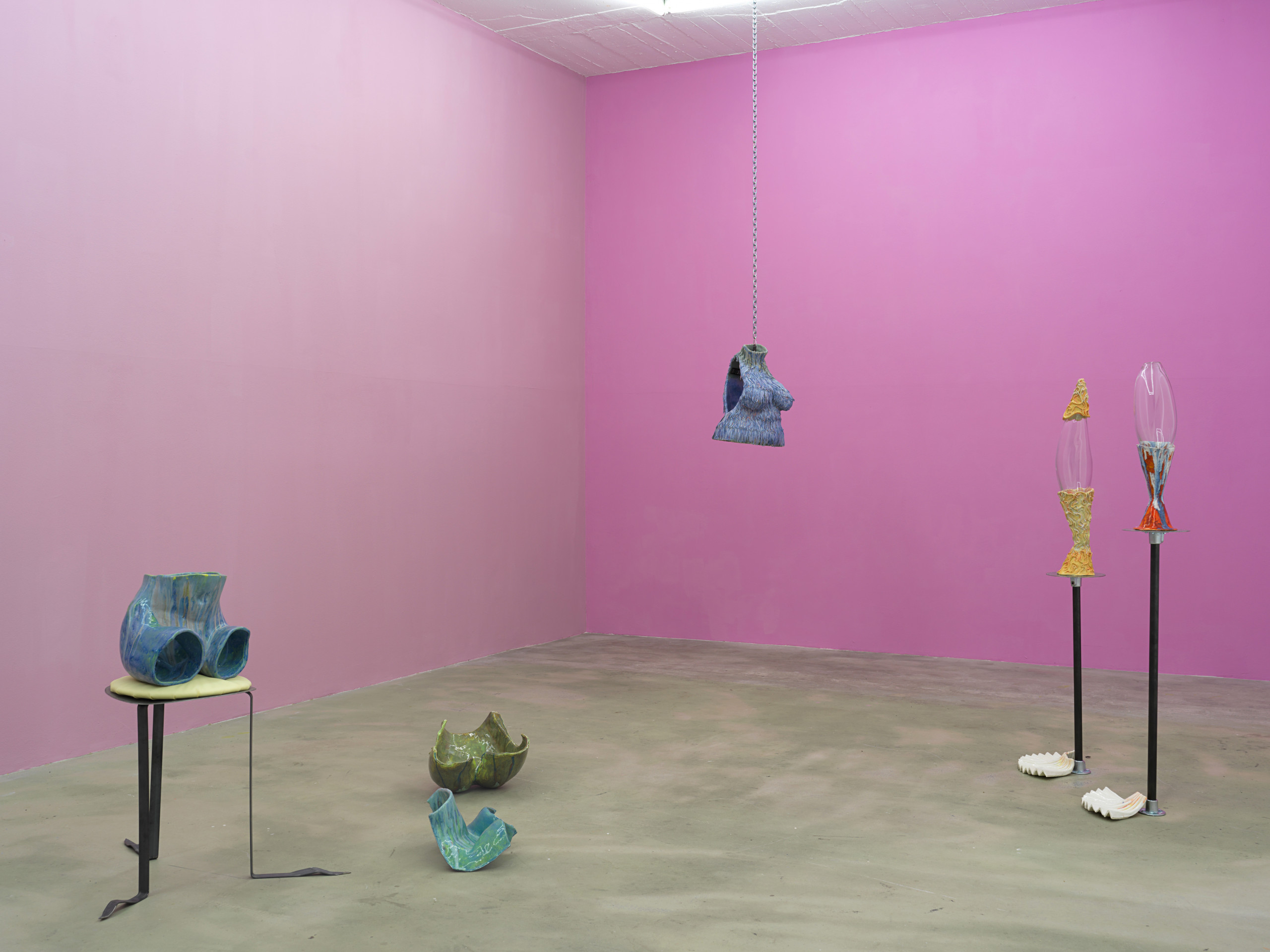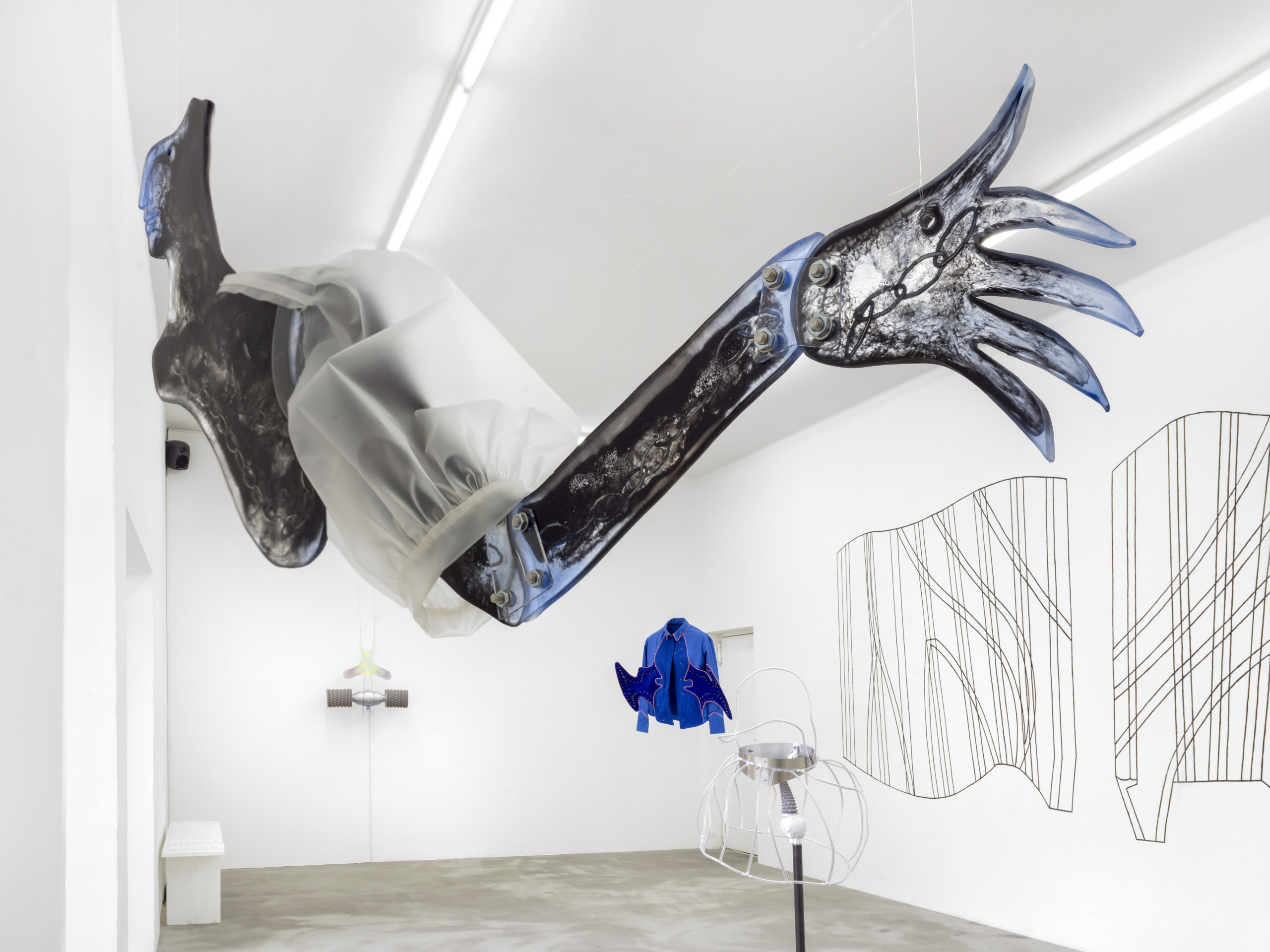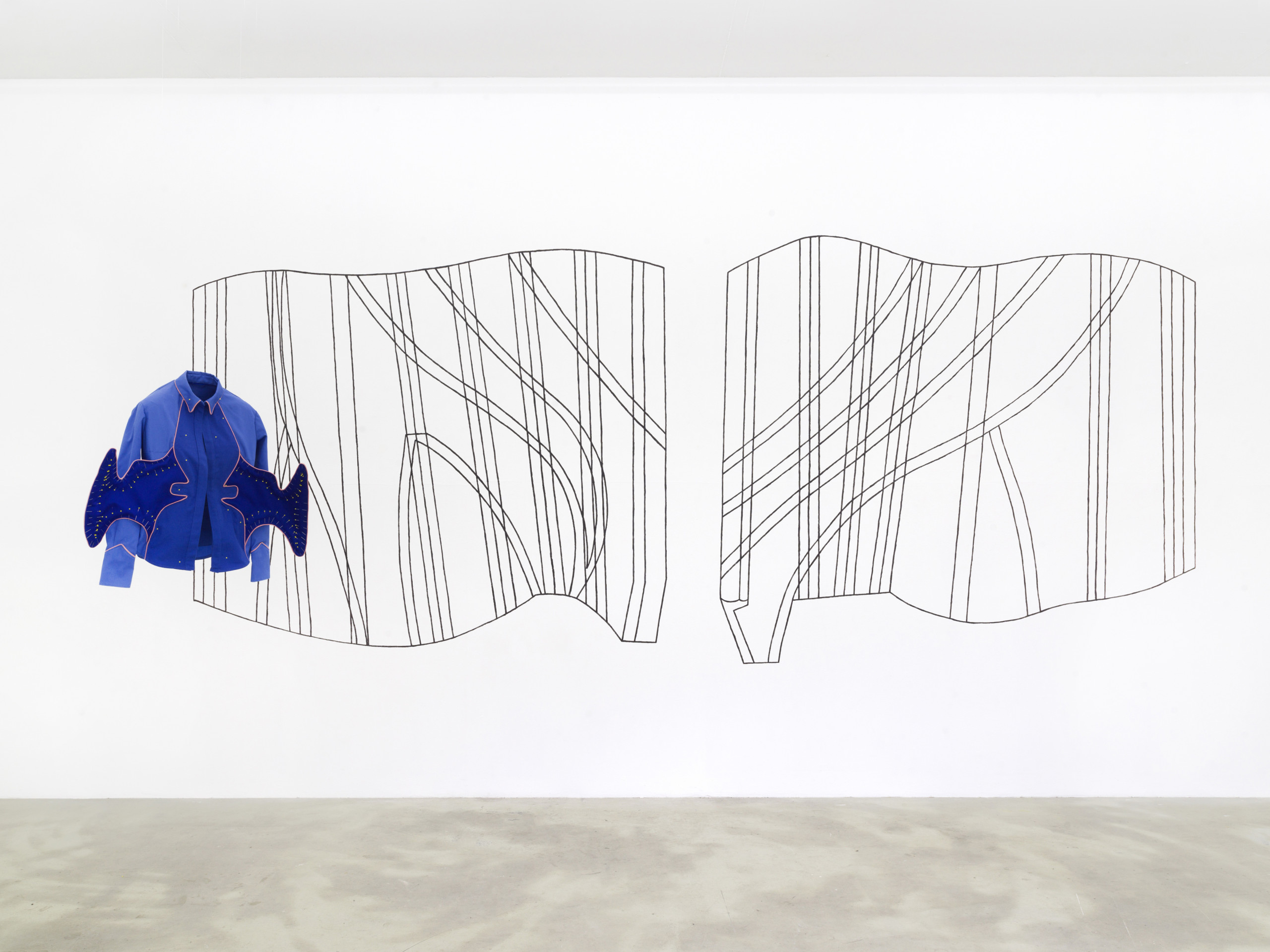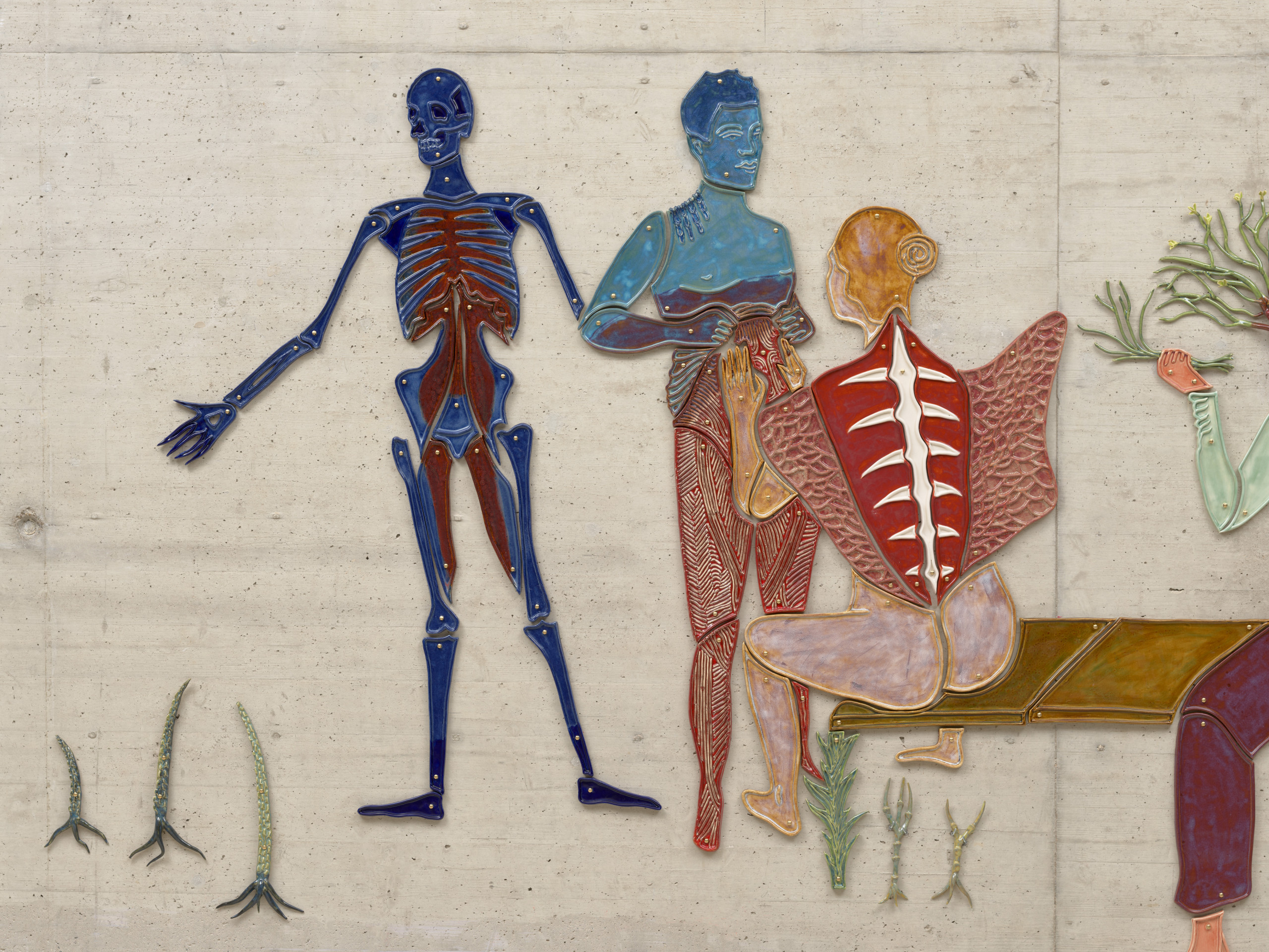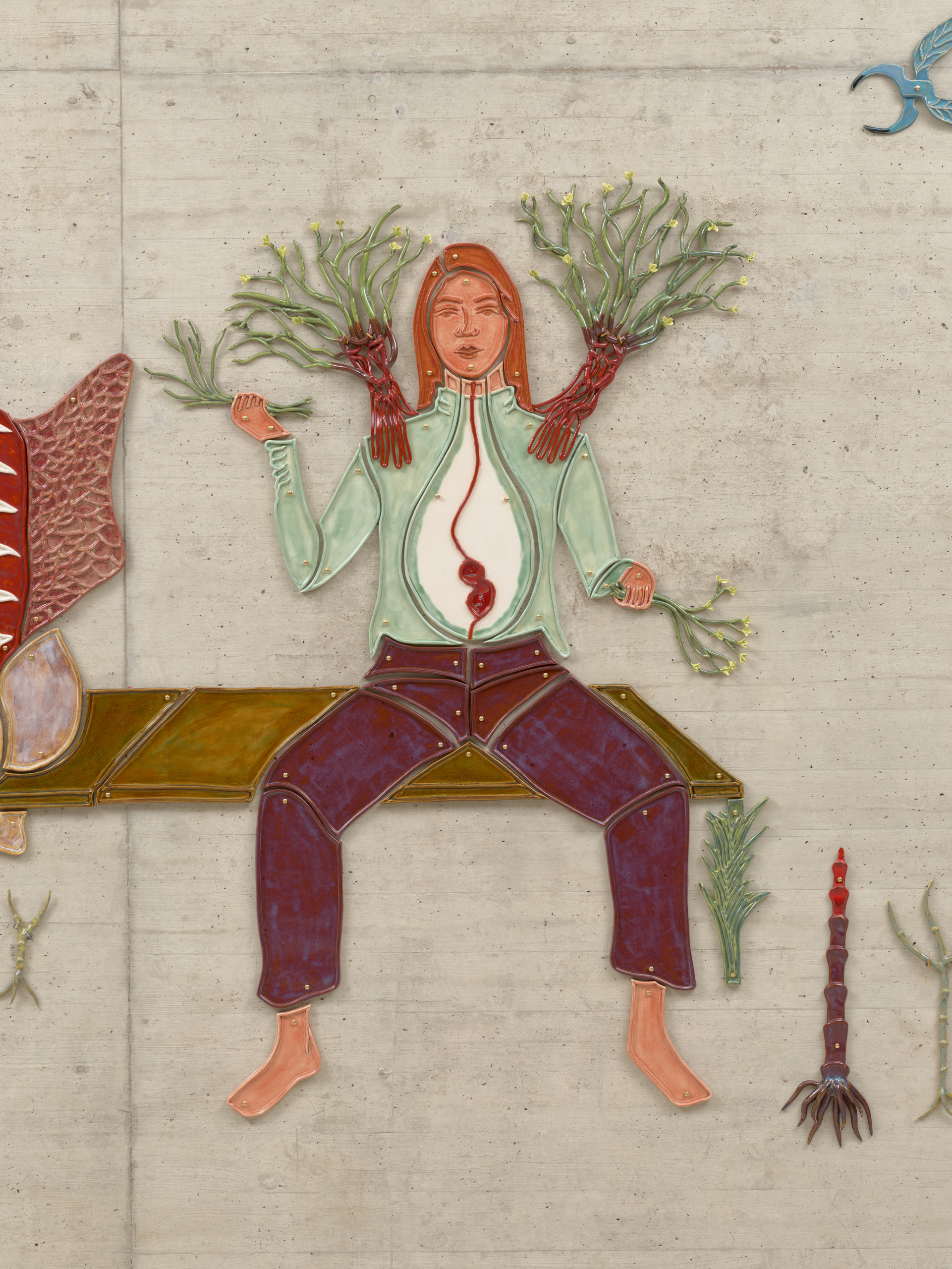Paloma Proudfoot • The Three Living and The Three Dead • Gallery Weekend Berlin • 28.04.–10.06.2023
a death depicts a life
Philomena Epps
Death defines life; a death depicts a life in immutable forms […] Life, death and resurrection were stages of a cosmic process which repeated itself continuously. Life had no higher function than to flow into death, its opposite and complement.
– Octavio Paz, The Labyrinth of Solitude, 1950
The evolution of Paloma Proudfoot’s new exhibition, The Three Living and The Three Dead at Soy Capitán, was informed by her research into Medieval cultural traditions surrounding death. In this period, death was often configured as a personified force, able to interact with the living. In the fresco The Triumph of Death (1440-5) at Palazzo Abatellis in Palermo, death is shown as an animated skeleton, depicted riding a skeletal horse through a rabble of people, with the characters in the crowd displaying a broad spectrum of reactions, from utter terror, bewilderment, and oblivious apathy. The legend of The Three Living and The Three Dead – from which Proudfoot’s exhibition and central piece takes its title – first appeared in the thirteenth century, with the moral tale functioning as an extension of the popular memento mori motif. In the story, three noblemen encounter three ecclesiastic decaying corpses in a forest. The corpses reproach the noblemen for their behaviour, warning them about the fleeting transience of earthly existence, and how their wealth and status will be meaningless in the afterlife without salvation.
While the reality of death defined and instructed Medieval attitudes to life, the topic is awkward, shrouded, and stigmatised in contemporary Western culture today. In her reimagining of the tale, Proudfoot extracts the religious and moral didacticism from the original, but retains its emotive timbre. The imagery across the exhibition asserts tender scenes of communion between the living and the dead. Proudfoot is guided by the expansive possibility of grief as a generative and vitalising force, a slow and non-linear process, albeit psychically and physically all-consuming, with intense emotions causing physiological symptoms: a heavy heart, a weight in the stomach.
The exhibition comprises three sequential frieze scenes, dismantling the concept of the body as a single integrated entity, instead representing intermediary figures made from an assembly of parts. Corporeal boundaries are blurred, dissolving the margins between the mortal and the dead, the internal and the external. Organs are revealed, the oesophagus and stomach made visible. Flesh is opened up, unfurling like an elaborate garment, with skin and cloth becoming indistinguishable through this visceral unravelling of the body. There is a sense of softness, of vulnerability, despite the hardness of the glazed clay, with Proudfoot’s particular palette evocative of natural vegetable dyes. A pair of disembodied forearms, with sinewy muscle sprouting into tendrils of green shoots, places their hands on the shoulders of one of the central characters, as if the dead is soothing the living through the gesture of touch. These exchanges of love and dependence are emphasised elsewhere: to hold someone, to clothe them, to feel their presence in their absence. Each body is shown as connected, reliant somehow on one another. Their shared flow of somatic energy is visually rendered through the mauve and plum hues that radiates like heat through each of their disparate bluish or green forms.
This mutual reliance is shown not just between the figures but also gestures towards the surrounding landscape. Two sets of oversized eyes peer over the exhibition, perhaps bloodshot with roots or shining with cat-like iridescence, they are magnified as if about to come under an optician’s assessment. Rope weaves through one figure, an arterial flow circulating and lacing the fragmented limbs together before bleeding out into the surrounding field of dying sunflowers. Fruit flies, most often seen as pests or expendable scientific subjects for testing genetic disorders, are here outsized, magnifying their role in understanding physical inheritance and symbolically rendered as carriers of memory. Encircling two figures in a gentle yet macabre embrace of dissection, their gauze wings are embroidered with drawings from Proudfoot’s notebook.
Throughout her practice, Proudfoot has been led by an enduring interest in how corporeality is both registered and articulated. With a background in textiles, her artistic process mirrors flat pattern-cutting, initially working with paper templates before realising the work in a three-dimensional format. The concept of the clothed body also challenges the limits of our identity, a way of framing and distinguishing ourselves from the other, while retaining the potential for a shared affinity or community. The process of dressing, or undressing, can be infused with intuition, emotions, or memories. The body is perceived and represented as a series of fragmented part-objects able to be altered, contoured, defined, or stretched. In addition to the imagery of the frieze, this corporeal convergence can be seen in the ceramic spines corseted by ropes cladding the back of a bespoke bench, grafted and cloned from the surrounding ceramic relief. There is an occupation with anatomy, suggesting a relationship between dress-making and medical procedures: the act of cutting, stitching, repairing. As Roland Barthes once wrote on the designer Erté, “it is impossible to conceive of a dress without a body … the empty garment, without head and limbs … is death.” Proudfoot has spoken about shedding skins, imagining how our dead cells merge with the lint of our clothes, melding with the dust in our home and the objects we surround ourselves with. When someone dies, we are left with these items, a record of the body which is no longer here, but their aura, this dust, is still ensconced within its fibres.
Paloma Proudfoot (*1992, London) holds an MA from Royal College of Art, London. Upcoming shows include a solo exhibition at The Lowry Museum in Manchester in 2024 and a group show at Goldsmiths CCA London in 2023. Proudfoot lives and works in London.
Press
-
a death depicts a life by Philomena Epps
German translation / Deutsche Übersetzung
-
The Three Living and The Three Dead by Anna Ratcliff
B'SPOQUE magazine, 05/2023
-
The Big D by Esther Harrison
Creme Guides, 05/2023
-
Memento mori, aber ... Paloma Proudfoot bei Soy Capitán by Julia Meyer-Brehm
gallerytalk.net, 05/2023
-
Gallery Weekend 2023: The Kreuzberg Walkabout by Olivia Ladanyi
Berlin Art Link, 05/2023
-
Unsere Highlights: Berlin, Berlin
Weltkunst, 04/2023
-
Paloma Proudfoot: The Three Living and The Three Dead
Berlin.de, 04/2023
-
MUST SEE • Paloma Proudfoot
ARTFORUM, 04/2023
-
10 Ausstellungen, die ihr nicht verpassen solltet by Anna Meineke
gallerytalk.net, 04/2023
-
10 Must-See Shows at Gallery Weekend Berlin 2023 by Josie Thaddeus-Johns
Artsy.net, 04/2023
-
Gallery Weekend Berlin 2023: Our Top Picks
Berlin Art Link, 04/2023
